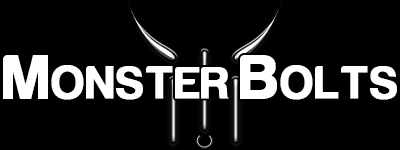Washers do far more than “fill space.” The right type spreads load, protects surfaces, maintains clamp force under vibration, and helps your joint meet code. This guide covers the most common washer families, the standards behind them, and how to choose the correct washer for your bolt size and environment.

Washer Types at a Glance
| Washer Type | Common Standards (US / Metric) | Primary Purpose | Typical Use |
|---|---|---|---|
| Flat (Plain) | ASME B18.22.1 (USS/SAE); ISO 7089 (normal), ISO 7090 (chamfered), ISO 7092 (small), ISO 7093-1 (large) | Distribute load, protect surfaces, adjust bearing area | General machinery, wood/metal assemblies |
| Split Lock (Helical Spring) | ASME B18.21.1; DIN 127 (legacy); DIN 7980 (high-collar) | Resist loosening via spring tension and edge bite | Light-to-moderate vibration; non-structural joints |
| Toothed Lock (Internal/External) | ASME B18.21.1 | Bite into mating surface for anti-rotation | Electrical grounding, thin sheet, under heads |
| Belleville (Disc Spring) | DIN 2093 (disc springs); DIN 6796 (for bolted joints) | Maintain preload across temperature/creep | Thermal cycling, gasket joints, heavy equipment |
| Wave Spring | DIN 137 (A/B) | Light spring force; take up axial play | Bearings, electronics, low-load stacks |
| Hardened Structural | ASTM F436 (with F3125 A325/A490 bolts); ISO 7093-1/7094 (metric large series) | High hardness to prevent embedment/relaxation | Steel construction, flanged joints, structural kits |
Flat (Plain) Washers
Choose flat washers to increase bearing area, protect painted/soft surfaces, or bridge oversized holes. In Inch sizing, you’ll typically see USS (larger OD) and SAE (smaller OD) patterns per ASME B18.22.1. In Metric, look for ISO 7089 (normal), ISO 7090 (chamfered), ISO 7092 (small series) and ISO 7093-1 (large series).
- Material: Stainless A2 (304) for general corrosion resistance; A4 (316) for marine/saline exposure.
- Finish: Zinc (CR+3) for indoor corrosion protection; plain steel for dry assemblies; hot-dip galvanized where specified.
Split Lock (Helical Spring) & Toothed Lock Washers
Split lock washers (ASME B18.21.1; DIN 127 / 7980) add spring tension and an edge “bite” that helps resist rotation under mild vibration. Toothed lock washers (internal/external tooth per ASME B18.21.1) bite into the surface and are common in electrical grounding and thin-sheet applications. For critical vibration environments, consider modern prevailing-torque nuts or wedge-locking systems in addition to—or instead of—traditional lock washers.
Belleville (Disc Spring) & Wave Washers
Disc springs (DIN 2093 / DIN 6796) maintain preload where temperature changes, gasket creep, or joint relaxation would otherwise reduce clamp load. Wave washers (DIN 137) provide lighter spring forces in compact spaces (bearings/electronics). Stack disc springs in series/parallel to tune travel vs. force.
Hardened Structural Washers
When using structural bolts (F3125 Grade A325/A490), use ASTM F436 hardened washers to prevent embedding/relaxation that would reduce preload. Metric analogs include large-series ISO washers (e.g., ISO 7093-1/7094) in high hardness classes for use with property-class 8.8/10.9/12.9 fasteners where specified.
How to Choose the Right Washer (Quick Checklist)
- Match the system: Inch bolts → ASME/USS/SAE; Metric bolts → ISO/DIN series.
- Pick the purpose: Load spread (flat), anti-rotation (lock/toothed), maintain preload (Belleville/wave), structural hardness (F436).
- Size by bolt diameter: Choose the washer ID to fit the bolt shank; then select OD (SAE small / USS large / ISO normal/large) to suit bearing area.
- Material & environment: Use A4 (316 SS) for marine/salt; A2 (304 SS) for general; zinc or HDG for coated carbon steel systems.
- Standards compliance: For inspected/engineered jobs, stick to the standard called out on drawings/specs.
Installation Tips
- Place flat washers under the rotating element (nut or bolt head) to reduce galling and protect the surface.
- For painted or soft materials, use a larger OD (USS / ISO 7093-1) to spread load and prevent imprinting.
- Use F436 hardened washers with high-strength structural bolts to maintain preload.
- In vibration, consider locking nuts or wedge-locking systems in addition to split/toothed washers.
Washer FAQs
Which is better for vibration: split lock or toothed?
Toothed washers bite more aggressively into thin or soft materials; split lock adds spring tension. For severe vibration, pair with prevailing-torque nuts or wedge-locking systems.
What’s the difference between SAE and USS flat washers?
Both follow ASME B18.22.1. SAE pattern has a smaller OD for tighter clearances; USS has a larger OD for greater load distribution.
When do I need ASTM F436 washers?
Use hardened F436 washers with structural bolts (F3125 A325/A490) or where the spec calls for hardened washers to prevent embedment.
Stainless A2 vs A4: which should I pick?
A2 (304) covers most general applications. A4 (316) is preferred in marine, chemical splash, or high-salinity environments.
Do flat washers change torque values?
Yes—surface condition affects friction and resulting clamp load. Keep surfaces clean and consistent; lubricate if your spec calls for it.
